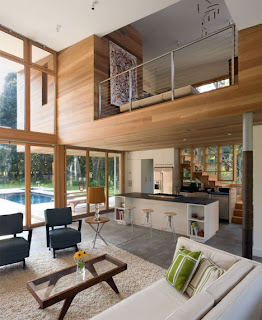Primary Solid-Cylinder
The primary solids are cubes, cylinders, pyramids, and spheres. We see primary solids influencing the form of many structures in our built environment. We also see primary solids in nature as well. For example, a tree becomes natures form of a cylinder. It is a form with volume.
I chose the leaning tower of pisa to represent my primary solid. It is a great example of the cylinder. Ironically, not only does the entire structure represent a cylinder but the columns that make up the structure also are cylinders.
Dimensional Transformation
When a forms dimension is changed while remaining the same family type, a dimensional transformation has occurred. For example, if a rectangle shape that makes a part of a house is stretched and added to another part of the house, a dimensional transformation has occurred. Stretching and contracting a form are also ways dimensional transformation can occur, and are often seen.
I chose this modern home as a great example of dimensional transformation. You see the rectangles that make up the house vary in size, yet remain the same type, or family of form. It is easily seen in this image as the transformation happens in a sequential manner.
Subtractive Form
When parts are taken from the whole of a form, the form becomes subtractive. This is seen often in design. Where the designer pulls parts from the whole to create interest in form. This is also common in modern architecture. Subtraction is all around us.
I chose this interior space as an excellent example of subtractive form. In this balcony space you can see that a piece has been subtracted out to create the opening for that space. This creates a more interesting space. It also creates a functional space.
Additive Form-Clustered Form
Additive Form is also very common. Unlike the subtractive form, additive form is created when you add elements to a form. Additive is seen commonly when balcony's are added to an apartment building. Additive comes in five types, Centralized, Linear, Radial, Clustered, and Grid.
This image is a creative representation of clustered form. These unique buildings designed for Dubai are in a cluster form which is an additive form type. These buildings have a unique relationship with each other and the space in the way they are clustered together.
Formal Collision of Geometry-Surfaces
Formal collision of geometry can occur in five instances, circle and square, rotated grid, articulation of form, edges and corners, and surfaces. There are many possibilities for formal collision of geometry. It occurs constantly in design. It can be see when a circle meets a square or a rectangle in a building, or any number of other combinations.
This image represents the collision of geometry in the form of surfaces. This is a unique space that does a great job in representing this formal collision of geometry.
The primary solids are cubes, cylinders, pyramids, and spheres. We see primary solids influencing the form of many structures in our built environment. We also see primary solids in nature as well. For example, a tree becomes natures form of a cylinder. It is a form with volume.
I chose the leaning tower of pisa to represent my primary solid. It is a great example of the cylinder. Ironically, not only does the entire structure represent a cylinder but the columns that make up the structure also are cylinders.
Dimensional Transformation
When a forms dimension is changed while remaining the same family type, a dimensional transformation has occurred. For example, if a rectangle shape that makes a part of a house is stretched and added to another part of the house, a dimensional transformation has occurred. Stretching and contracting a form are also ways dimensional transformation can occur, and are often seen.
I chose this modern home as a great example of dimensional transformation. You see the rectangles that make up the house vary in size, yet remain the same type, or family of form. It is easily seen in this image as the transformation happens in a sequential manner.
Subtractive Form
When parts are taken from the whole of a form, the form becomes subtractive. This is seen often in design. Where the designer pulls parts from the whole to create interest in form. This is also common in modern architecture. Subtraction is all around us.
I chose this interior space as an excellent example of subtractive form. In this balcony space you can see that a piece has been subtracted out to create the opening for that space. This creates a more interesting space. It also creates a functional space.
Additive Form-Clustered Form
Additive Form is also very common. Unlike the subtractive form, additive form is created when you add elements to a form. Additive is seen commonly when balcony's are added to an apartment building. Additive comes in five types, Centralized, Linear, Radial, Clustered, and Grid.
This image is a creative representation of clustered form. These unique buildings designed for Dubai are in a cluster form which is an additive form type. These buildings have a unique relationship with each other and the space in the way they are clustered together.
Formal Collision of Geometry-Surfaces
Formal collision of geometry can occur in five instances, circle and square, rotated grid, articulation of form, edges and corners, and surfaces. There are many possibilities for formal collision of geometry. It occurs constantly in design. It can be see when a circle meets a square or a rectangle in a building, or any number of other combinations.
This image represents the collision of geometry in the form of surfaces. This is a unique space that does a great job in representing this formal collision of geometry.















Very good picture of dimensional transformation. I had trouble finding an example for that one but the one you chose shows it really well and makes it easy to understand.
ReplyDelete